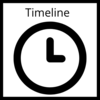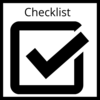According to your start and end dates ( 2024-05-07 to 2024-05-17 ),
you have 10 days to finish your assignment.

Your steps
Click on the steps to expand or collapse. Expand All Steps (+)Step 1: Get started
Complete by Wed May 08, 2024
Percent time spent on this step: 10%
A. Understand your assignment
Determine exactly what the assignment is asking you to do. Read the assignment carefully to determine the purpose, audience, scope, format, and length. For help, see Understanding your assignment.
Policy briefs can take various forms. For ideas and inspiration see these examples of policy briefs produced by different organizations.
B. Download the policy brief template
- Download and save the policy brief outline as a new file, with a name that suits your assignment. This new file will help you to structure your policy brief.
- You can now modify the sections to match the ones given in your assignment.
C. Familiarize yourself with the issue
- In some instances you will have been assigned a specific topic and problem, in other instances you may have to choose the topic and problem.
- In either case do some general reading about the topic and problem.
Using traditional journalistic questions (who, what, where, when, why) can help you focus on aspects that will be the focus of your policy brief.
Step 2: Research your policy issue
Complete by Sat May 11, 2024
Percent time spent on this step: 35%
A. Design your research strategy
List terms/concepts associated with your policy issue. Isolate the main concepts. These are the terms you will enter into the library catalogue and databases to identify relevant books, journal and newspaper articles, and various types of reports. For more information on creating a strategy, see Effective research strategies (PDF) and contact the librarian for your subject.
B. Find and evaluate sources
The sources you choose must be relevant and current. You need to make sure you are using academically sound sources such as peer-reviewed books and journal articles, but also sources such as government information, policy institute (think tank) documents, and material that relays the voice of the groups or people impacted by the issue, such as those who are marginalized or mistreated in some way.
Not all sources are equally relevant or truthfully representative. See Evaluating information sources for help discerning what will add real value to your assignment.
C. Select and organize what you've found
Gather your information and keep careful track of your sources as you go along. For help with this, see Conducting research and note taking (PDF).
Step3: Begin to organize your brief
Complete by Mon May 13, 2024
Percent time spent on this step: 20%
Use your policy brief outline (retrieved in Step 1B) to fill in the sections of your policy brief with rough ideas you generate. Point form is fine. The following questions can help guide this work. Even though the executive summary comes at the beginning, notice that it makes more sense to do it at the end.
A: Who do you have to convince?
(Knowing this will influence how your write about the issue and layout the evidence.)
- Who are the informed but non-specialist readers of your brief?
- How are the readers likely to talk about/view this issue?
- What overall message do you want to convey that will resonate with them?
- Write this down in two sentences to help you stay on track.
B: Problem statement
- What is the extent/scope of the problem?
- What evidence can you present that demonstrates its impact, urgency, or magnitude?
- What facts, graphs, photos, quotations, statistics, or maps could you include here to support your points?
C: Stakeholders
- Who are all the stakeholders and how does the issue affect them?
- Keep in mind that individuals, marginalized or small communities, and underrepresented voiced may have different perspectives from government staffers and corporate leaders. You will want to include these perspectives if they are relevant to the issue and your recommendations.
D: Policy options
- Are you going to present multiple options and recommend one or present just one option?
- What arguments and evidence can you provide to make your case?
- Who will be impacted by the option(s) and how?
E: Recommendations
- Which specific actions or measures are required and who needs to undertake them in order to bring about change?
- Are you going to close the paper with a closing call to action? This might be placed in the conclusion element if you have one.
F: Sources consulted
- Have you included a list of credible references that support the points you make?
- Have these point covered a range of perspectives?
G: Executive summary
- Have you included the key aspects of the rationale and problem?
- Does your summary entice the readers to read further?
Step 4: Write the first draft
Complete by Wed May 15, 2024
Percent time spent on this step: 20%
Time to get writing! A first draft is an attempt to get ideas down on paper. It's okay if your ideas aren't completely formed yet. Let go of the need for perfection and write quickly. You can revise later.
For additional help, see Writing a first draft (PDF).
Step 5: Revise and proofread
Complete by Fri May 17, 2024
Percent time spent on this step: 15%
A: Evaluate your first draft and conduct additional research as needed
Determine if there are any gaps in your draft. Do you have enough evidence to support your arguments? If you don't, you should conduct further research.
B: Revise your draft
Print out your brief and work from a hard copy. Read it carefully and look for higher-order problems first, such as organization, structure, evidence, and analysis. For help, check out these tips for revision.
C: Evaluate your second draft and rewrite as needed
Narrow your focus to paragraph-level issues such as sentence flow and transitions. For help with this, see Transition words.
D: Proofread the final version of your brief
Last step! Read carefully to catch small errors. Here are some Proofreading strategies. Also, take time to make sure your brief adheres to the conventions of the style guide you are using or your instructor's requirements. Think about titles, margins, and page numbers. Is a cover sheet required?
Your list of sources should contain key items you used to write your brief. Follow the citation style guide recommended in your assignment or by your instructor. For help, take a look at the citation and style guides on the Library's website. Using reference management software can also help you manage your citations as you write. Use tools such as RefWorks and Write-N-Cite for building your bibliography.

